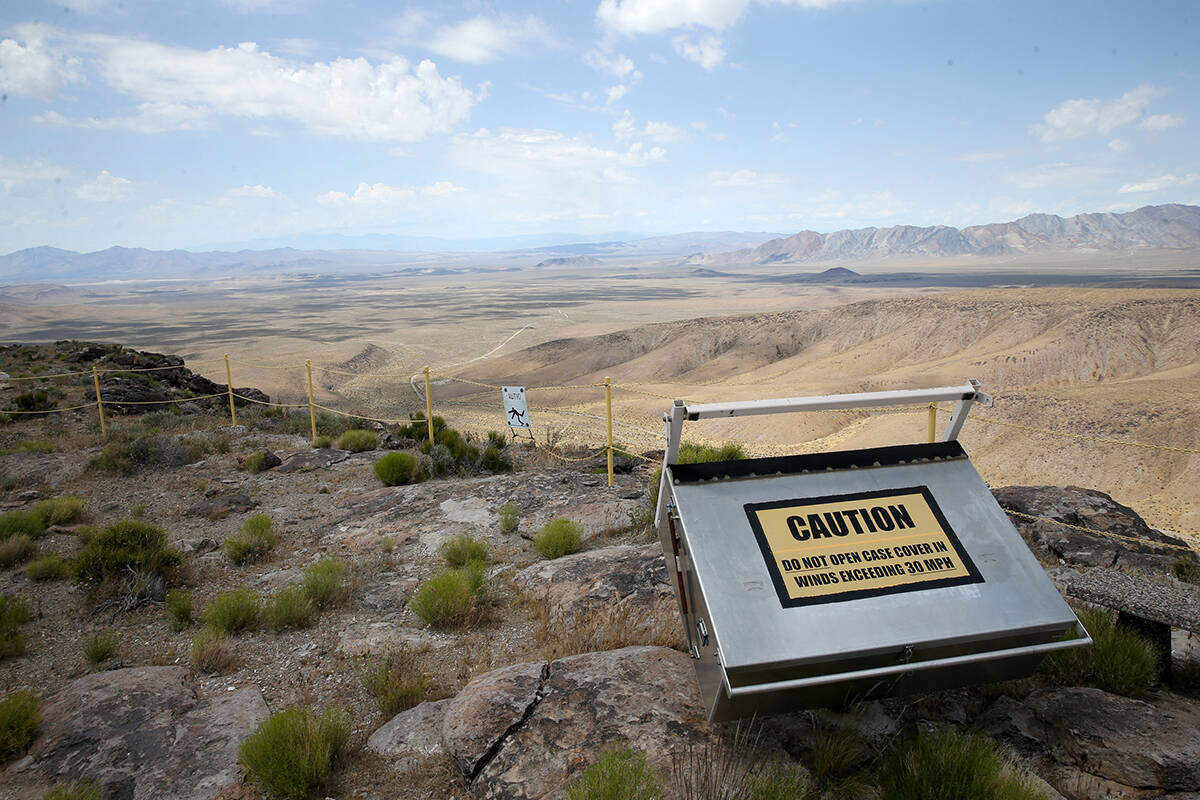Project 2025: Nevada’s 5 takeaways from controversial plan
A conservative set of policy proposals has become one of Democrats’ main criticisms of a potential second Trump presidency, and although the former president has tried to distance himself from the controversial project, it continues to weigh down his campaign.
Regardless of how much or how little of the project might get implemented under a second Trump term, it has a few elements that pertain specifically to Nevada.
Project 2025, also known as the “2025 Presidential Transition Project,” is a 900-page blueprint of policy proposals written by authors close to former President Donald Trump and launched by the Heritage Foundation that a Republican presidential candidate could implement in 2025.
Among many other ideas, the project proposes replacing career government officials with political appointees, eliminating the Department of Education, restricting contraception and reversing policies that allow transgender people to serve in the military.
Vice President Kamala Harris and her supporters warned Trump would implement aspects of Project 2025 during her rally in Las Vegas, echoing an increasingly common Democratic attack against Republicans.
Trump has said on his social media platform that he knows “nothing about Project 2025” and has “no idea who is behind it.” His campaign has instead focused on the 16-page GOP platform that highlights energy independence, securing the southern border, implementing tax cuts and the “no tax on tips” plan, and securing elections through voter ID and paper ballots.
Here’s what Project 2025 has to say about Nevada.
1. It calls to “restore readiness” of nuclear testing.
In its section about defense, one of the authors of Project 2025, Christopher Miller, wrote the U.S. must restore its nuclear infrastructure so that it is “capable of producing and maintaining nuclear weapons.”
It specifically proposes restoring readiness to test nuclear weapons at the Nevada National Security Site, located about 65 miles northwest from Las Vegas, to ensure the U.S. can respond quickly to “asymmetric technology surprises.”
Nevada has not conducted an explosive nuclear test since 1992, when President George H.W. Bush signed legislation imposing a moratorium on nuclear testing. Since then, the security site’s primary mission has been to support nuclear nonproliferation, or preventing an increase in nuclear weapons.
Project 2025 also says in its energy chapter that the U.S. and the NNSA “needs to make the design, development, and deployment of new nuclear warheads a top priority.” It says the U.S. lacks sufficient plutonium production capabilities.
It also calls for rejecting the ratification of the Comprehensive Test Ban Treaty and instead “indicate a willingness to conduct nuclear tests in response to adversary nuclear developments if necessary.”
2. It calls for taking another look at Yucca Mountain.
In 2002, the Department of Energy recommended Yucca Mountain, 90 miles northwest of Las Vegas, as a federal nuclear waste repository. Efforts to move forward on the project have come up over the years, but each time they came to a screeching halt, largely due to the resounding bipartisan opposition from Nevada’s federal officials.
Project 2025, however, calls for it to be looked at again and for its licensing process to be restarted.
“Providing a plan for the proper disposal of civilian nuclear waste is essential to the promotion of nuclear power in the United States,” the Project 2025 chapter written by Bernard L. McNamee, says.
The project calls for the next presidential administration to work with the Nuclear Regulatory Commission to review the Department of Energy’s permit application for Yucca Mountain.
“Yucca Mountain remains a viable option for waste management, and DOE should recommit to working with the Nuclear Regulatory Commission as it reviews DOE’s permit application for a repository,” it reads.
McNamee stressed, however, that finishing the review of the project does not mean Yucca Mountain would be completed and operational but “merely presents all information for the State of Nevada, Congress, the nuclear industry, and the Administration to use as the basis for informed decisions.”
3. It proposes a humane disposal of Nevada’s wild horses and burros.
The country’s wild horses and burros — about 60 percent of which live on public land in Nevada — are an icon of the American West but for years have been struggling with overpopulation. To control the population, the Bureau of Land Management has instituted multiple programs, from sterilization to adoptions.
Project 2025 author William Perry Pendley wrote in the Department of the Interior Chapter that those programs are not enough to solve the problem. He called on Congress to enact laws permitting the Bureau of Land Management to “dispose humanely” of some wild horses and burros to curb overpopulation.
BLM allows for the euthanasia of a wild horse or burro if it is sick and has a poor prognosis for recovery, according to the Bureau of Land Management’s guidance for euthanasia.
4. It could adjust Nevada’s national monument territories.
Project 2025 says the new presidential administration should review national monument designations to see if they were improperly designated. It will “permit a fresh look at past monument decrees and new ones by President Biden.”
That could include Avi Kwa Ame.
It would also like to see the size of national monuments to be reduced, and it calls to repeal the Antiquities Act of 1906, which allowed Biden to designate Avi Kwa Ame as a national monument.
5. Nevada’s water storage could be updated.
Project 2025 also includes provisions relating to western water storage. It calls for developing additional water storage capacity in the west by updating dam water control manuals for facilities, reducing bureaucratic inefficiencies by consolidating federal water working groups, adopting improvements related to forecast informed reservoir operations and aerial snow observation systems.
It also calls for clarifying the Water Infrastructure Finance and Innovation Act in order to foster more opportunities for locally led investment in water infrastructure.
During his first presidency, Trump issued a memorandum aiming to streamline water infrastructure processes and improve use of technology to increase water reliability. Project 2025 calls for reinstating that memorandum.
Contact Jessica Hill at jehill@reviewjournal.com. Follow @jess_hillyeah on X.




















